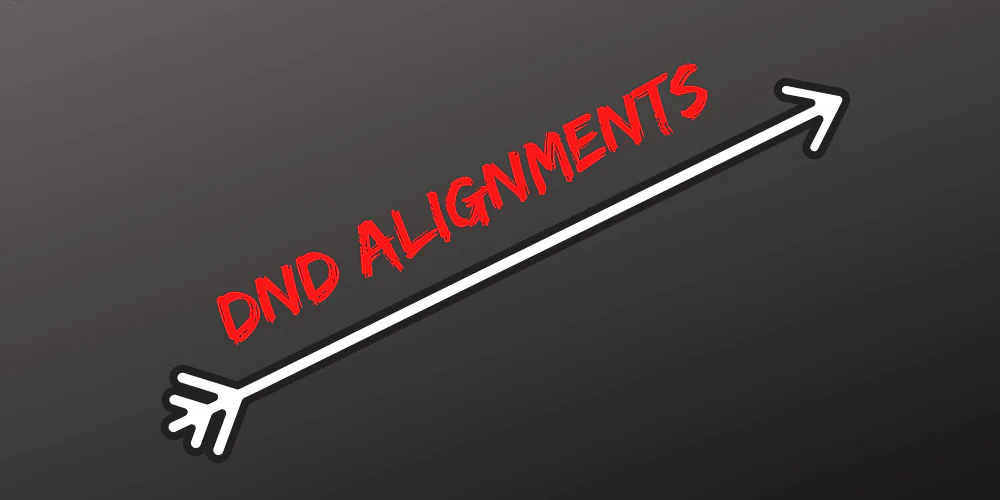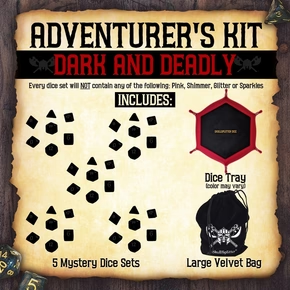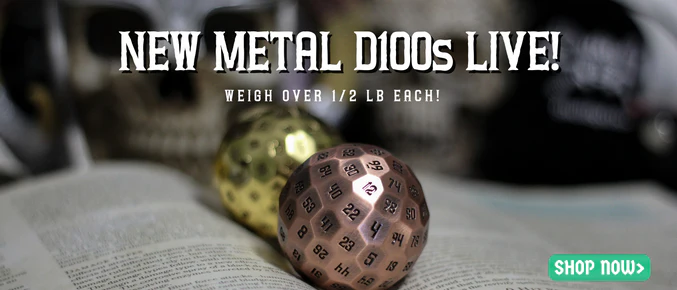
Alignment
DnD Alignments and Why They Are Important for the Game
What alignment should I play? Does Chaotic Neutral mean I can do whatever I want? Does Lawful Good mean lawful stupid? Dungeons & Dragons uses an alignment tool that reveals the moral and ethical perspective of the player characters and NPS. In Dungeons & Dragons 5E some big changes have been made to class requirements for alignment, but you still have two choices: one, where your views on "law" vs. "chaos" will matter, and second, on "good" vs. "evil."
Table of Contents:
The need for DnD alignments
Many players say that the alignments are essential to the game, while a few think that they may not need them anyway. But most gamers prefer to have them when they are in a critical ethical situation.
5e has removed many previous class requirements, most notably paladins are no longer required to be lawful good, and druids no longer need to be true neutral.
There are two significant reasons why D&D alignments are crucial:
1. You get a quick summary and guideline of how your character may act in the game. If you know that your character is Chaotic Good, it doesn’t give you a thorough idea of how it might play out.
2. Some of the forces and monsters in the DnD universe are inherently evil or good. Some spells and abilities specifically impact certain alignments. Creatures like goblins are inherently seen as evil, but not every critter should be considered so.

Change in Character Alignment
A Character's alignment can change based on their actions. In older versions of D&D this could impact character progression, but it no longer does. Let's say you stole, a magic broom, it could force your true neutral character to move to neutral evil.

Types of DnD alignments
There are nine alignments in Dungeons and Dragons 5e:
i. Lawful Good
Characters with lawful good alignment have a sense of duty and honor. It's frequently stated that lawful good does not mean lawful stupid, and lawful good characters can sometime do otherwise harsh actions. The creatures that have this character trait are the noble golden dragons.
ii. Neutral Good
Characters with neutral good alignment mostly act altruistically. They don’t have any regard or disregard for or against any lawful precept such as traditions or rules. These are the most peace-loving characters in the game. They don’t have a problem cooperating with the lawful officials. But they don’t feel indebted to them. Neutral good characters don’t suffer an inner conflict like the lawful good characters if they have to choose between bending and breaking the law or rule. If they feel it is a decision that will bring a positive change, they will not hesitate to take the decision.
iii. Chaotic Good
Chaotic good characters always disdain the bureaucratic organizations that often interfere in social improvement. These characters try to bring a change for the better. They believe in personal freedom for everyone. If you are playing a chaotic good character, you will usually incline to do what is right; regardless of the law. However, their methods to bring about the change are often disorganized, and they don’t tune in well with society.
iv. Lawful Neutral
A lawful neutral character believes in lawful concepts like order, tradition, rules, and honor. Sometimes, these characters can even have a prior preference to choices that they think are controlled by benevolent authorities. Some of the lawful neutral characters in the DnD game are the soldiers who follow orders, an enforcer or judge who only follows the rules of the law, and also a disciplined monk.
v. True Neutral
True neutrals don’t feel strongly towards any alignment, and they don’t actively seek their balance. They take decisions on their feet instead of judging what is right and what is wrong according to their character traits. Most "natural" creates in D&D are true neutral.
vi. Chaotic Neutral
Chaos is the defining attribute for these characters; frequently they are disruptive to the party and can wreak havoc on even the best laid plans. Check out our detailed blog post of Chaotic Neutral here.
vii. Lawful Evil
Lawful evil characters often search for a well-ordered system. They try to exploit this system to show a combination of both desirable and undesirable traits. Some of the alignments that fall under the lawful evil characters are devils, tyrants, mercenaries, and corrupt officials. They will probably stick to a deal that is made, but you can be certain they don't have your best interests in mind when they make it. Beware of loopholes when negotiating with a lawful Evil character.
viii. Neutral Evil
Neutral Evil characters are very selfish and may not care if they turn against their allies. NE characters won't hesitate to hurt others if it furthers their means. All they care about is to fulfill their wishes and demands. However, they won’t go out of their way to achieve their desires; they won't cause any mayhem or carnage if they think that the actions will not benefit them.
A suitable example of a neutral evil is an assassin. They may have little regard for the formal laws of society. However, he/she will not kill anyone needlessly. Another example of a neutral evil character is a henchman who plots evil plans against their superior behind his back, and also a mercenary who can switch sides if they get a better offer.
ix. Chaotic Evil
These characters are more evil than neutral evils. They don’t respect any rules, don’t value people’s lives, and they will do anything to fulfill their desires; they are the most cruel and selfish characters in the game who value nothing but their personal freedom. These characters are so evil that they don’t work well in groups as well. A big differentiation for chaotic evil characters is that they may do evil things even if they don't benefit from it.
Apart from the alignments, two axes also impact the movement of the alignments.
a) Law vs. Chaos

Law signifies trustworthiness, honor, reliability, and obedience to authority while chaos indicates flexibility, adaptability, and freedom. The neutral alignments in the game usually respect the law and chaos. They don’t feel compelled to follow a rule they don’t like, but they don’t feel like rebelling against it either.
b) Good vs. Evil
Most fantasy games have a good versus evil axis. Good signifies respect for life, concern for sentiments and dignity, and altruism. Evil, on the other hand, is the exact opposite. They indicate oppression and the desire to kill or harm others. As already mentioned, some of the evil creatures and characters have no compassion for others.
Conclusion:
Ultimately alignment should be a tool to help you decide how your character may act in a situation. While it doesn't mean every act will align, it means that most of your acts should. Also, it shouldn't be used as an excuse for playing like a jerk; regardless of alignment you should consider how your in game actions will impact the human playing the game with you. If your characters are always jerks, it's not your characters that are jerks.
Enjoy this Guide? You May Also Like:
Tabletop players love our metal D&D dice. Get yourself or your loved one a set today!
Thinking about other classes? Check out our other Class Guides for Necromancers and Bards!
New to find a D&D Group? Check out our guide on How to Find a D&D Group.

Disclaimer
Last updated: January 27, 2019
The information contained on www.SkullSplitterDice.com website (the "Service") is for general information purposes only.
www.SkullSplitterDice.com is a participant in the Amazon Services LLC Associates Program, an affiliate advertising program designed to provide a means for sites to earn advertising fees by advertising and linking to Amazon.com. (source: Section 5)
Blueshift Nine, LLC assumes no responsibility for errors or omissions in the contents on the Service.
In no event shall Blueshift Nine, LLC be liable for any special, direct, indirect, consequential, or incidental damages or any damages whatsoever, whether in an action of contract, negligence or other tort, arising out of or in connection with the use of the Service or the contents of the Service. Blueshift Nine, LLC reserves the right to make additions, deletions, or modification to the contents on the Service at any time without prior notice.
Blueshift Nine, LLC does not warrant that the Service is free of viruses or other harmful components.
Affiliate disclaimer
This affiliate disclosure details the affiliate relationships of Blueshift Nine, LLC with other companies and products.
Some of the links are "affiliate links", a link with a special tracking code. This means if you click on an affiliate link and purchase the item, we will receive an affiliate commission.
The price of the item is the same whether it is an affiliate link or not. Regardless, we only recommend products or services we believe will add value to our readers.
By using the affiliate links, you are helping support the Service, and we genuinely appreciate your support.
Affiliate advertising programs that the Service uses are:
- Amazon Services LLC Associates Program
- As an Amazon Associate, I earn from qualifying purchases.
- Blueshift Nine, LLC is a participant in the Amazon Services LLC Associates Program, an affiliate advertising program designed to provide a means for sites to earn advertising fees by advertising and linking to Amazon.com or endless.com, MYHABIT.com, SmallParts.com, or AmazonWireless.com.
- Pages on this Service may include affiliate links to Amazon and its affiliate sites on which the owner of this Service, Blueshift Nine, LLC, will make a referral commission.

